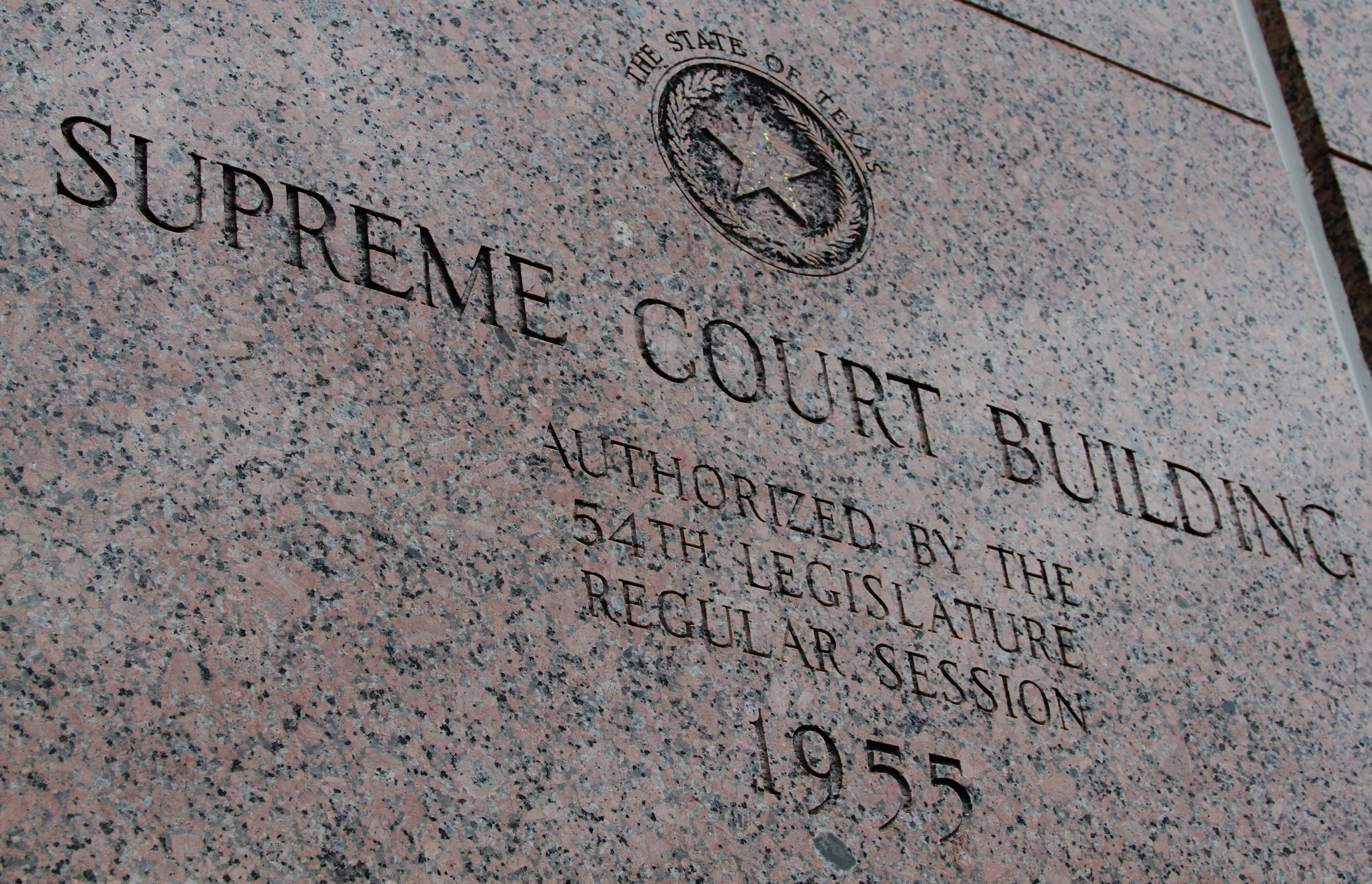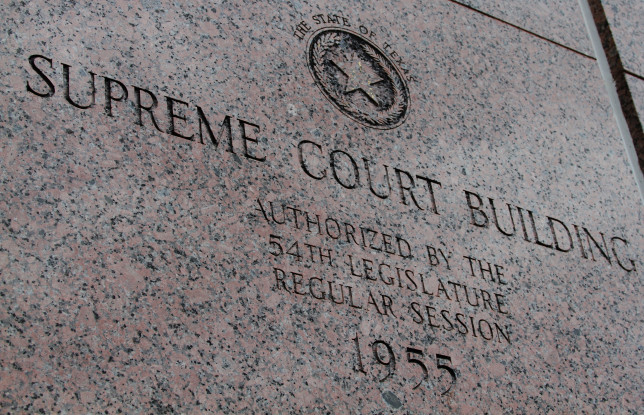J&D Towing, LLC v. Am. Alternative Ins. Corp.
No.14-0574
Case Summary written by Morgan Shell, Staff Member.
JUSTICE WILLETT delivered the opinion of the Court, in which CHIEF JUSTICE HECHT, JUSTICE GREEN, JUSTICE GUZMAN, JUSTICE LEHRMANN, JUSTICE BOYD, JUSTICE DEVINE, and JUSTICE BROWN joined, and in Parts I, II.B, III.C, and IV of which JUSTICE JOHNSON joined.
J&D Towing, LLC (J&D), a towing company from Huntsville, Texas, owned one tow truck, a 2002 Dodge 3500, purchased for $18,500. While the owner was driving to repossess a vehicle on December 29, 2011, Cassandra Brueland struck the passenger side of the truck, rendering the vehicle a total loss.
After the accident, J&D negotiated a settlement with Brueland’s insurer for $25,000, which J&D used to purchase another truck and continue the business.
J&D filed an additional claim with AAIC under an underinsured-motorist policy, claiming that the settlement with Brueland’s insurer was insufficient to compensate him for the loss of the use of the truck. Upon AAIC’s refusal to pay the claim, J&D sued the insurance company to recover the damages. At trial, J&D asked the jury to award loss-of-use damages in the amount of $27, 866.25 or $29,416.25, contingent on whether the award was for a nine or ten week period. AAIC, upon filing a motion for summary judgment and instructed verdict, contended that Texas did not permit the recovery of loss-of-use damages in total destruction cases and was therefore not legally obligated to pay for the damages. The trial court denied both motions and at the conclusion of trial, submitted to the jury a question concerning the amount of loss-of-use damages. The jury awarded J&D $28,000 and entitled AAIC to a credit of $5,500––the amount paid by Brueland’s insurer for J&D’s loss-of-use damages.
The court of appeals, upon agreeing with AAIC’s contention that Texas law did not permit loss-of-use damages when the property is totally destroyed, reversed and entered judgment for AAIC.
J&D subsequently appealed the court of appeals’ decision arguing that Texas law permits loss-of-use damages in partial-destruction cases and to deny these damages simply because the vehicle was totally destroyed, instead of only partially destroyed, was illogical.
On review, the Supreme Court of Texas observed that loss-of-use damages are usually encompassed within consequential damages and account for the damages incurred during a reasonable period of lost use of the property. It also observed that while jurisprudence behind partially destroyed property is clear-cut, it has not directly addressed loss-of-use damages in total-destruction cases.
The Court proceeded to examine other Texas court of appeals decisions that had discussed in dicta the availability of loss-of-use damages in total-destruction cases. It observed, as did AAIC and the court of appeals below, that at least six court of appeals had expressly restricted loss-of-use damages in total-destruction cases. On the other hand, it examined Mondragon v. Austin and a Second Court of Appeals decision in 2014, which recognized in dicta that loss-of-use damages in total-destruction cases should be available.
Pursuant to the principals of full and fair compensation, as well as the holdings of a majority of other Texas case law prohibiting loss-of-use damages for total-destruction incidents, the Court looked to common law development, treatises and other jurisdictional views for further guidance. It recognized that most case precedent in the United States resolving loss-of-use damages relied on common law and took a “monkey-see-monkey-do” approach. It noted that, instead of using independent reasoning, courts strung together cases and treatises without further analysis.
Despite this earlier approach, however, the Court relied on the shift in both case law and legal treatises on loss-of-use damages in total-destruction cases and emphasized that sixteen high courts in the country had made loss-of-use damages available in total-destruction cases. It agreed with the general reasoning behind those decisions that there is no distinction between partially and completely destroyed personal property when determining loss-of-use damages. Additionally, it agreed with the Supreme Court of Iowa’s reasoning that “loss of use damages will be incurred as readily when a vehicle is totally destroyed or when it cannot be restored by repair to its prior condition as when the vehicle can be restored by repair.” It further recognized that in order to uphold principals of full and fair compensation, loss-of-use damages must be available in total-destruction cases.
Finally, it utilized treatises, some of which have eliminated the distinction between partial-destruction and total-destruction of property altogether, and the Restatement (Second) of Torts to finalize its decision. The Restatement, which the Court observed was most in line with the majority of jurisdictions, allows a plaintiff to recover the value of the property, as well as interest on the loss-of-use damages and compensation for loss of use in a total-destruction case.
In observing the importance of compensating a party for injury of his or her personal property, it held that the owner of personal property may recover loss-of-use damages for totally destroyed property in Texas. It warned however, that permitting loss-of-use damages should be controlled by commonsense rules. The damages cannot be too remote and must be directly traceable to the tortious act. Neither can the damages be speculative nor awarded for an unreasonable period of lost use.
Finding that the trial court did not abuse its discretion when it submitted the loss-of-use question to the jury, the Supreme Court reversed the court of appeals’ judgment, finding for J&D.


